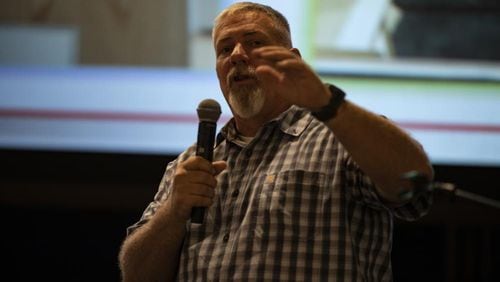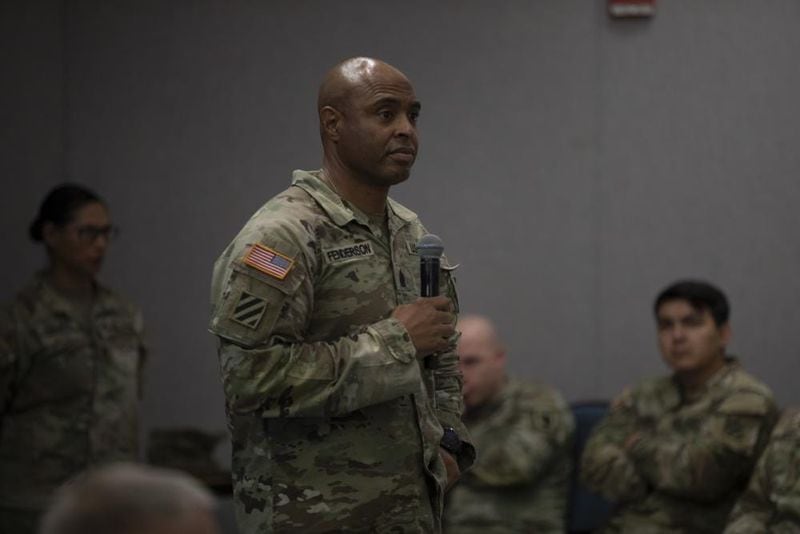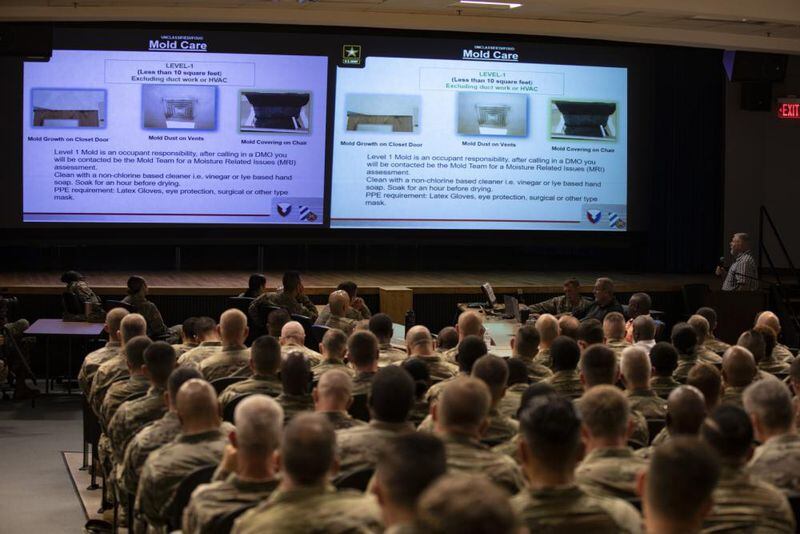After a day-long stand down earlier this month to address mold in the barracks, Fort Stewart has released information on just how many barracks are impacted.
There have been 454 service orders for mold, 120 of which are completed and 334 of which remain open, according to Kevin Larson, chief of public communications for Fort Stewart.
In an email to the USA Today Network in Georgia, Larson said that Fort Stewart leadership has been re-educating leaders and soldiers on how to submit service work orders, and has put 1,200 dehumidifiers in place in barracks rooms across the installation. Larson also said that they plan to address 30 to 40 work orders per day starting Oct. 3, but it has been a slow process to address the work orders with the increased volume.
Credit: @usawtfm
Credit: @usawtfm
The stand down on Sept. 12 followed social media posts and complaints from soldiers about mold in the barracks.
“The question is, why are we not checking our soldiers' rooms?” Command Sgt. Maj. Quentin Fenderson was quoted as saying in a press release on the stand down. “We’ve got be held accountable. We’re going to identify what we need to do. We’re going to fix it and we’re going to move forward. I’m going to walk through your barracks, I need you to do your jobs; I’m going to do mine.”
Credit: Defense Visual Information Distribution Service
Credit: Defense Visual Information Distribution Service
According to that press release, most of the mold issues were in the 30 Volunteer Army barracks, which total 2,300 rooms on post. They do not meet current Army standards. One barrack building was renovated last year, while four more are being demolished. At the time of the stand down, Fort Stewart said that no soldiers had been permanently moved or reported health impacts from the mold.
A few days after the stand down, Fort Stewart also held a media roundtable, and leaders said the barracks would be fully renovated by fiscal year 2035.
"We are taking proactive measures since mold has began to mitigate this, and we have put millions of dollars into our barracks to renovate, to build new and to take care of what we've got going on, this is not a new issue," said garrison Command Sgt. Major Bryan D. Buchanan during the roundtable.
Credit: Defense Visual Information Distribution Service
Credit: Defense Visual Information Distribution Service
William McGovern, the head of the Department of Public Works mold team, said the team has 10 members including three civilians, all of whom are state certified to remediate mold.
"On our mold team we have NCOs who go through two phases of training, phase one where they're going through being part of the mold team on the day they arrive to the day they go to the actual certification school, and they get an idea of how to categorize the level of the mold we're dealing with, how to properly clean, how to set up containment units, what cleaners to use," McGovern said during the roundtable.
The team provides soldiers with gloves and dilute hydrogen peroxide to deal with small amounts of mold, McGovern said, in addition to more serious mitigation.
This article originally appeared on Savannah Morning News: Latest adversary for U.S. Army? Mold in the Fort Stewart barracks
MEET OUR PARTNER
Today’s story comes from our partner, Savannah Morning News. Savannah Morning News provides daily news coverage on Coastal Georgia. Visit them at savannahnow.com or on Twitter @SavannahNow.
If you have any feedback or questions about our partnerships, you can contact Senior Manager of Partnerships Nicole Williams via email at nicole.williams@ajc.com.










